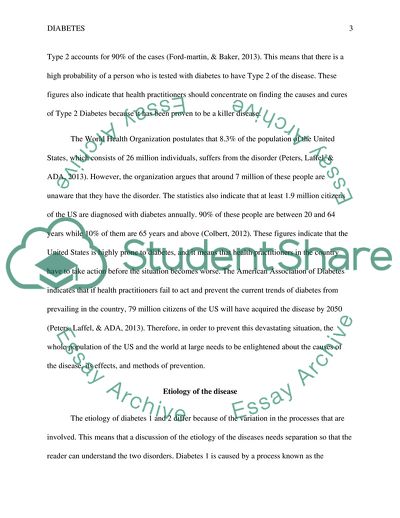Cite this document
(The Prevalence of Diabetes, Its Causes, Effects, and How to Prevent It Coursework Example | Topics and Well Written Essays - 2000 words, n.d.)
The Prevalence of Diabetes, Its Causes, Effects, and How to Prevent It Coursework Example | Topics and Well Written Essays - 2000 words. https://studentshare.org/health-sciences-medicine/1821731-diabetes
The Prevalence of Diabetes, Its Causes, Effects, and How to Prevent It Coursework Example | Topics and Well Written Essays - 2000 words. https://studentshare.org/health-sciences-medicine/1821731-diabetes
(The Prevalence of Diabetes, Its Causes, Effects, and How to Prevent It Coursework Example | Topics and Well Written Essays - 2000 Words)
The Prevalence of Diabetes, Its Causes, Effects, and How to Prevent It Coursework Example | Topics and Well Written Essays - 2000 Words. https://studentshare.org/health-sciences-medicine/1821731-diabetes.
The Prevalence of Diabetes, Its Causes, Effects, and How to Prevent It Coursework Example | Topics and Well Written Essays - 2000 Words. https://studentshare.org/health-sciences-medicine/1821731-diabetes.
“The Prevalence of Diabetes, Its Causes, Effects, and How to Prevent It Coursework Example | Topics and Well Written Essays - 2000 Words”. https://studentshare.org/health-sciences-medicine/1821731-diabetes.


